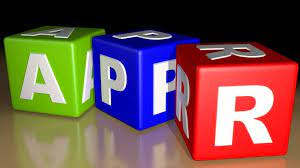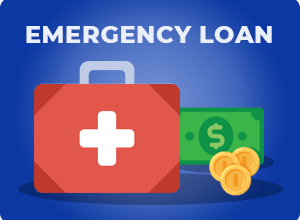It’s likely that if you have a credit card, you’ve come across the term “annual percentage rate” (APR), but you may be unfamiliar with what it implies. Even though it’s not always right, APR is often used in place of interest rates when talking about different kinds of credit. When you apply for a credit card, it’s important to know the different APRs because they can make a big difference in how much you owe if you carry a balance from month to month. If you know what goes into figuring out your annual percentage rate (APR), you can make better decisions about how you use your credit card. Learn about the ins and outs of the annual percentage rate (APR), how it relates to crypto, and how it affects car loans.
What is APR?
The APR, or annual percentage rate, is the standard rate used to determine the cost of borrowing money or taking out a loan. It considers the interest rate and any fees associated with a credit offer. Before you sign a credit agreement, your lender must tell you the annual percentage rate (APR).
Also, the annual percentage rate (APR) is a percentage that shows how much money really costs each year over the course of a loan or an investment. It is expressed as a number. This takes into account any fees or extra costs related to the transaction. However, compounding is not taken into account. The annual percentage rate (APR) is a bottom-line metric that consumers can use to compare different lenders, credit cards, or investment products.
Types of APR
Knowing about the different types of annual percentage rates (APRs) makes it much easier to choose a credit card that fits your spending habits. Keep in mind that the relevant APR may vary with the nature of the transaction.
Different forms of credit may have varying annual percentage rates. The annual percentage rate (APR) of a credit card is typically much higher than that of a car loan or a mortgage. The way you use your credit card might also affect the interest rate you pay. Here are a few types of APRs to be aware of:
#1. Cash Advance APR
When you use your credit card to withdraw money (for instance, from an ATM), you will typically be subject to a different annual percentage rate (APR) than you would be for purchases made with your card. Most of the time, the APR for a cash advance is higher than the APR for a purchase or a balance transfer. However, it is usually not as high as the APR for a penalty. Cash advances are risky because they usually don’t have a grace period. This is one of the reasons why they are risky. Instead, interest will begin to accrue on the day that you take out a cash advance.
#2. Penalty APR
You could be subject to a penalty annual percentage rate (APR) on your credit card if you let your payments fall behind by more than 60 days, which means that you don’t pay the minimum amount due each month. Annual percentage rates (APRs) for penalties are often a lot higher than the standard APR for purchases, and they tend to be around 29.90%. This is not just a random number; this is the highest fee that a bank can charge its customers. Keep in mind that not all credit cards have an annual percentage rate (APR) penalty, so you should check the terms and conditions that come with your card to determine if it does.
#3. Introductory APR
When you first open an account with some credit cards, the introductory annual percentage rate (APR) is often 0%. But these cards with a 0% introductory APR can be very helpful for people who want to make a big purchase with their credit card and could use a little extra time to pay off their debt. Despite the fact that this may look like a good deal at first, you should realize that once your promotional period ends, your account will be subject to the usual purchase APR.
#4. Balance transfer APR
You will be subject to this APR whenever you move or transfer a balance from one of your other cards onto your credit card. It is possible that a card’s annual percentage rate (APR) for transferring a balance will be higher than its APR for making a purchase, but this is very rare.
How Does APR Work?
When a person or company borrows money from a bank to pay for anything like a car or house, they pay a fee for the use of the terms of payment interest. The cost of a loan is equal to the amount borrowed plus the interest, which is shown as a percentage of a year.
Let’s look at a sample to see how this works in practice. Someone borrows $25,000 for a car purchase. You have five years to make payments on the loan, and the interest rate is fixed at 5% every year. Thus, the individual will have to pay a specific amount, roughly $470 per month.
On the other hand, monthly payments cover both interest and principal. Even though the total amount of each monthly payment stays the same, the amount of each payment that goes toward interest and principal decreases over time.
During the five-year repayment period, both the interest rate and the total amount paid each year can change. In this case, the interest rate will change as the borrower makes payments, starting at $1,500 per year and going up to a maximum of $2,250 per year. The total amount paid back by the borrower is $28,306.88. This includes the principal payment of $25,000 and the interest payment of $3,306.00.
What Is a Good APR Rate?
Typically, the larger the loan amount, the lower the annual percentage rate (APR). The interest rate you are offered on a credit card will typically range from 5% to over 30%, with the actual rate you are offered depending on how high your credit score is. It’s important to remember that these charges are typically based on transaction rates (e.g., online or in-store). Cash withdrawals and other non-purchase transactions may have different fees.
Lastly, credit cards with 0% APR for purchases and balance transfers usually have 0% APR for three to forty months. Maintaining timely and full payments is crucial to maintaining the promotional rate. Pay off the balance before the promotional term ends because the card normally reverts to a variable rate.
In addition, checking your free credit score can give you an idea of your chances of acquiring the best deals and, in turn, the rate you’re searching for.
What Is APR in Crypto?
Many cryptocurrency options provide higher rates of return or interest than traditional investment options. There is some foreign jargon, such as annual percentage yield (APY) and annual percentage rate (APR), that we have to deal with, whether you want to invest or take out a loan.
Furthermore, interest from various forms of crypto investments or loans can be calculated using the standard methods of an annual percentage rate (APR) and an annual percentage yield (APY). Funding exchange-based liquidity pools, “staking,” “yield farming,” “crypto savings accounts,” and other similar projects are all examples of investments that could be made.
Interest on some of these assets may be calculated using the annual percentage rate (APR), while on others, the annual percentage yield (APY) will be used. Understanding the distinction between the annual percentage rate (APR) and annual percentage yield (APY) is crucial for any crypto investor.
What Is the Annual Percentage Yield (APY) In the Crypto World?
Annual percentage yield (APY) in crypto refers to a savings interest where investors can put their cryptocurrency assets with investment companies and earn a rate of return over a certain amount of time. From the standpoint of the borrower, the annual percentage yield (APY) is the interest rate that must be paid each year.
Investors will get a higher fixed rate of interest if they keep their crypto assets locked up for a certain amount of time. Investors can make money from passive income, but they can’t sell locked crypto assets, and their income may go up or down depending on how the market is doing.
Where Do APR and APY Come Into Play in Crypto?
In traditional finance, annual percentage rate (APR) rates are heavily promoted, especially for lending products, while annual percentage yield (APY) rates are used more to promote certain investment products. The terms annual percentage rate (APR) and annual percentage yield (APY) are used a lot in the crypto industry for a wide range of lending and borrowing options, liquidity pools, staking services, yield farms, and other finance-related crypto platforms like DeFi protocols and centralized exchanges (CEXs). The largest centralized and decentralized crypto finance providers offer APR and APY rates on a wide range of goods.
Pay particular attention to the compounding method, i.e., the number of times and the intervals at which your investment or loan will be compounded, when using platforms that use APY rates for borrowing or investing.
What Is APR For a Car?
Before applying for a loan for a new or tokunbo car, there are a few important things to know. The APR is one such idea. Depending on interest rate restrictions and other fees, lenders’ annual percentage rates (APRs) measure the total cost of borrowing. The APR of your car loan will also be based on how much money you borrow and your credit score.
Also, unless you plan to pay cash for your new car, you’re probably going to need a car loan. However, borrowing money comes with fees in the form of interest payments to the lender. A car loan’s annual percentage rate (APR) includes the lender’s interest rate and other fees. Prepaid finance expenses have a wide variety of prices, so watch out for them.
A lender can impose an “origination fee” to cover the costs of loan approval or to make more money. This cost might be substantial, negligible, or nonexistent. The APR factors in these expenses so that borrowers can readily compare the overall cost of borrowing across institutions.
What Is the Average APR Range For a Car Loan?
A car loan borrower with a high credit score gets a cheaper APR than one with a low score. Also, the APR could go up a lot if you have to pay extra fees to the lending institution or the dealership. The costs of your auto loan will increase your total interest payments. Knowing interest rates and the APR is crucial given the vast range of rates and expenses (APR).
What Factors Affect Your APR?
The interest rate offered by the lender affects the annual percentage rate (APR). The interest rate is technically set when you apply for a loan. However, your interest rate will also be influenced by a number of other factors.
Lenders use your credit score as one factor in determining the interest rate they give you. In the absence of other factors, a borrower with a higher credit score will be offered a lower interest rate. You might potentially save money on interest by searching for a loan from multiple lenders.
For instance, even if you apply to multiple lenders on the same day with the same exact information, the rates they provide may vary widely. For this reason, it often pays to look around.
Remember that the APR you need to qualify for a loan or line of credit may vary. Credit card annual percentage rates (APRs) are often higher than mortgage APRs. Annual percentage rates (APRs) are meaningless when comparing loans with varying terms, such as credit cards and mortgages.
How Do I Calculate My APR?
Borrowing or lending money comes with fees. The banking and financial industries depend on the money that people put in their accounts. They charge interest on customer loans because they provide quick access to funds.
The annual percentage rate (APR) is determined by adding up the interest accrued over the life of the loan, multiplying it by the loan’s principal, and then multiplying that result by the number of years for which the loan is outstanding.
The following are the steps to calculate APR:
- Determine the interest rate
- Interest rates plus administrative costs
- Breakdown by loan quantity: (principal)
- Calculate by dividing the loan period by the total number of days
- Simply multiply by 365 to get the total (one year)
- To get a percentage, simply multiply that number by 100.
What is APR vs APY?
An annual percentage rate or annual percentage yield. Both phrases are related to interest rates, which is why they are often used interchangeably. Wait, what are they exactly? And what exactly is their significance? Learning the differences between annual percentage rate (APR) and annual percentage yield (APY) will you in making sound financial decisions.
Furthermore, You can calculate interest using either the annual percentage rate (APR) or the annual percentage yield (APY/EAR). Nevertheless, the annual percentage rate (APR) measures how much interest is charged while the annual percentage yield (APY) shows how much interest is earned.
The annual percentage rate is a term frequently used in reference to credit accounts. If your account’s APR is low, your total cost of borrowing may also be cheap.
Commonly, APY is seen in bank deposit accounts. If your account’s APY is high, your potential earnings are high as well. It’s vital to remember that the APY isn’t the sole aspect that affects your profitability.
What Is the Difference Between APR and Interest Rate?
APR is more open about actual borrowing expenses than interest (with the exception of credit cards).
The principal you borrow and the interest rate will be the two primary determinants of your total loan repayment amount. In actuality, however, there are other expenses like origination fees and other lending fees that must be taken into account. Instead of focusing solely on interest, APR provides an overall picture of all associated fees.
Therefore, the annual percentage rate (APR) is a better tool for understanding loans or comparing loan offers. If two loans have the same interest rate but different APRs, the lower APR loan is usually the better value.
Conclusion
Any person taking out a loan should be wise to familiarize themselves with the specifics of that loan, such as the APR and whether or not it has a fixed rate. The borrower can then make plans for how to use the money and how to make regular payments on both the principal and the interest. The overall amount of interest paid on a loan might be significantly altered by inconsistent or missed installments.
APR FAQs
Is it better if the APR is high or low?
It’s better if the APR is low. Because A lower annual percentage rate (APR) is preferable for the cardholder.
What is the APR of 1 per month?
A loan with a 1% monthly rate and monthly compounding would have a 12% APR.
What does 30% APR mean?
The “Annual Percentage Rate” (APR) is the yearly rate at which interest will be added to your principal balance. The interest on a loan of $100 for a year with an annual percentage rate of 30 percent would be $30.
Similar Articles
- $2000 LOANS: What to Know About Getting a $2000 Loan With No Credit Check.
- Best Business Credit Cards For Startups In 2023.
- Best Business Credit Cards For Startups In 2023.
- WHAT IS A FINANCE CHARGE? Overview, How it Works, and How to Calculate
- FINANCE CHARGE: What Exactly Are Finance Charges? Why Are They Important?






